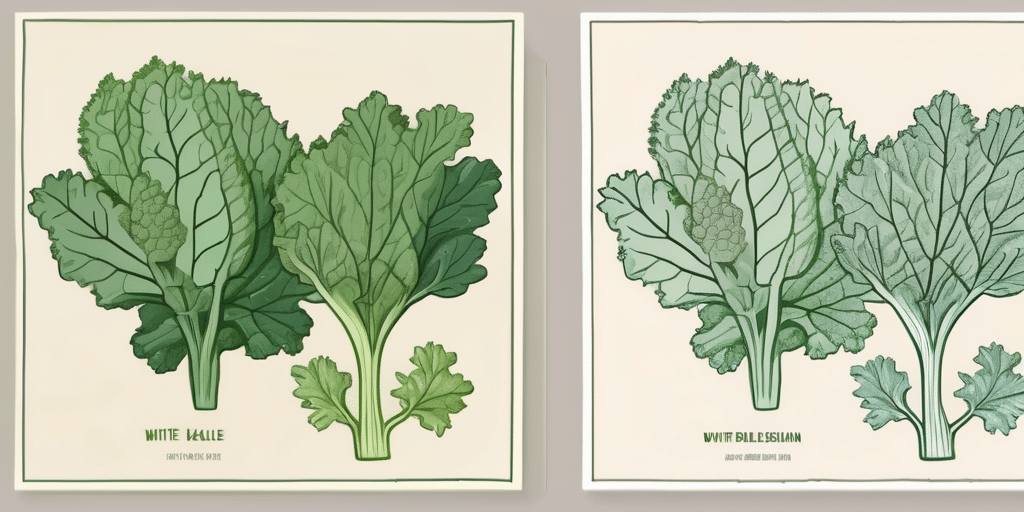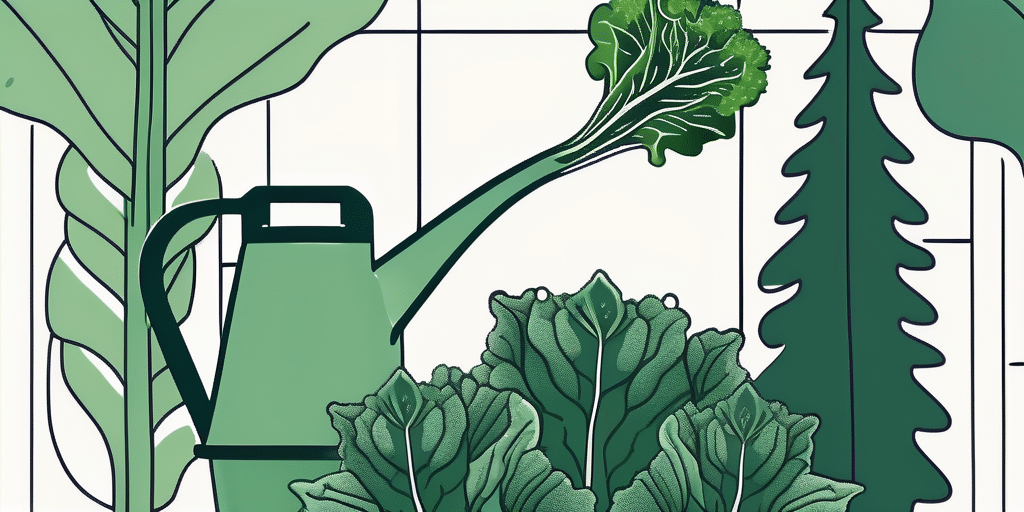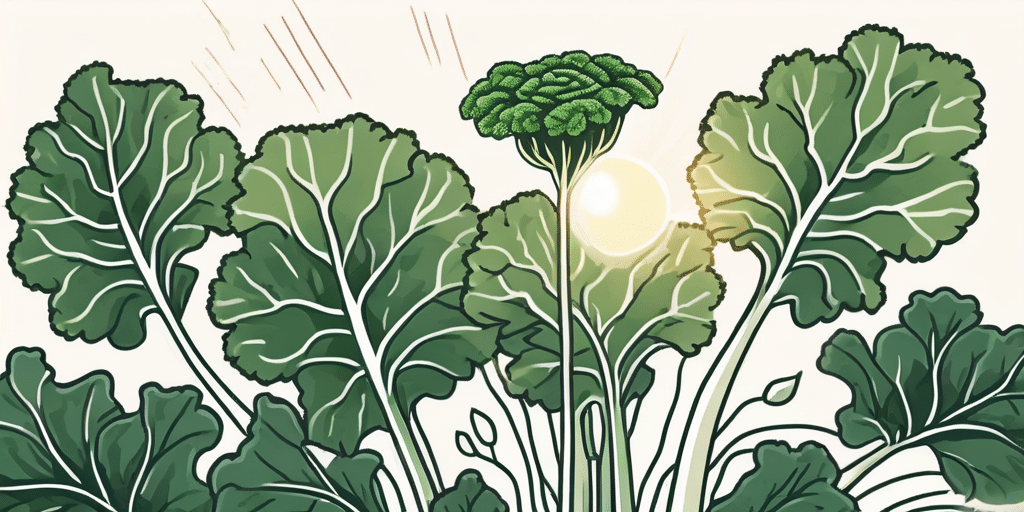Siberian Kale is a nutritious and versatile leafy green vegetable that is popular among health-conscious individuals and gardeners alike. If you live in Maryland and are interested in growing your own Siberian Kale, you’ve come to the right place! In this article, we will explore everything you need to know about planting and growing Siberian Kale in Maryland.
Climate & Hardiness Zones in Maryland
Before diving into the specifics of growing Siberian Kale, it’s crucial to understand the climate and hardiness zones in Maryland. The state of Maryland experiences a diverse range of climates, from the cool temperatures of the mountains in the west to the milder coastal conditions in the east.
The western part of Maryland, including the Appalachian Mountains, tends to have cooler temperatures due to its higher elevation. This region experiences colder winters and milder summers compared to the eastern coastal areas. The mountainous terrain also contributes to variations in microclimates, creating pockets of unique growing conditions for different plant species.
On the other hand, the eastern regions of Maryland, particularly along the Chesapeake Bay and the Atlantic coast, benefit from milder winters and warmer summers. The proximity to large bodies of water helps moderate temperatures, reducing the risk of extreme cold or heat waves that can impact plant growth.
The USDA has divided the United States into various hardiness zones based on average annual minimum temperatures. Maryland falls into USDA hardiness zones 6 and 7, which means that the average minimum temperatures range from -10°F to 0°F (-23°C to -18°C) in zone 6 and from 0°F to 10°F (-18°C to -12°C) in zone 7. These zones provide valuable guidance for gardeners and farmers in selecting plant varieties that are well-suited to the local climate and can thrive in Maryland’s diverse environmental conditions.
When to Plant Siberian Kale in Maryland
Now that you have an understanding of the climate in Maryland, let’s discuss the best time to plant Siberian Kale. This versatile vegetable is known for its cold tolerance, making it an excellent choice for Maryland’s climate.
The ideal time to plant Siberian Kale in Maryland is during the early spring when the soil has thawed and is workable. Aim to sow the seeds or transplant seedlings about two to three weeks before the last expected frost date in your area.
It’s essential to note that Siberian Kale can also be planted in the late summer or early fall for a fall harvest. Planting during this time allows the plant to establish itself before the cold weather sets in, resulting in a bountiful harvest.
When planting Siberian Kale in Maryland, consider the benefits of companion planting. Pairing kale with plants like garlic, onions, and herbs can help deter pests and improve overall plant health. Additionally, intercropping Siberian Kale with other vegetables can maximize space in your garden and promote biodiversity.
Another factor to keep in mind when planting Siberian Kale is the importance of crop rotation. Avoid planting kale in the same spot year after year to prevent the buildup of pests and diseases specific to this crop. Rotate your kale planting area with other plant families to maintain soil health and reduce the risk of issues.
Planting Steps:
- Prepare the soil by removing any rocks, weeds, or debris.
- Add compost or well-rotted manure to enrich the soil with nutrients.
- Sow the seeds or transplant seedlings according to the recommended spacing on the seed packet or plant label.
- Water the plants thoroughly after planting.
When to Harvest or Pick Siberian Kale in Maryland
Once you have successfully planted Siberian Kale in your Maryland garden, you may be wondering when it’s time to harvest this nutritious green.
Siberian Kale is often harvested when the leaves are young and tender, as they are most flavorful and less bitter at this stage. To determine if your Siberian Kale is ready for harvest, look for leaves that are about six to eight inches long and vibrant green in color.
Harvesting Siberian Kale is a simple process. Using a pair of clean garden pruners or scissors, cut the outer leaves from the plant, leaving the central bud intact. This allows the plant to continue producing new leaves for future harvests.
It’s important to note that Siberian Kale is a cold-hardy vegetable, meaning it can withstand frost and even taste sweeter after being exposed to cooler temperatures. In Maryland, where the climate can vary, Siberian Kale can be harvested well into the fall season, providing a fresh and nutritious addition to your meals.
When harvesting Siberian Kale, consider the time of day as well. Many gardeners prefer to harvest their kale in the morning when the leaves are crisp and full of moisture, ensuring the best flavor and texture. Additionally, by harvesting in the morning, you can take advantage of the higher sugar content that accumulates in the leaves overnight.
Frequently Asked Questions
1. Can I grow Siberian Kale in containers?
Absolutely! Siberian Kale can be grown in containers, making it an excellent option for those with limited space. Choose a container that is at least 10-12 inches deep to accommodate the plant’s root system. Make sure the container has drainage holes to prevent waterlogged soil.
When planting Siberian Kale in containers, it’s essential to use a well-draining potting mix to ensure proper root health. Consider adding some compost or organic matter to the soil to provide additional nutrients for the plant. Place the container in a location that receives at least 6-8 hours of sunlight per day for optimal growth.
2. How often should I water my Siberian Kale plants?
Watering requirements for Siberian Kale plants can vary based on various factors such as temperature, rainfall, and soil moisture. Generally, aim to keep the soil evenly moist but not waterlogged. Check the soil regularly by sticking your finger about an inch into the soil. If it feels dry at this depth, it’s time to water.
During hot summer months, Siberian Kale may require more frequent watering to prevent wilting. Consider using a soaker hose or drip irrigation system to ensure consistent moisture levels in the soil. Mulching around the base of the plants can also help retain soil moisture and reduce water evaporation.
3. Are there any pests or diseases that affect Siberian Kale?
Siberian Kale is known for its resistance to many common pests and diseases. However, like any plant, it can still be susceptible to a few pests such as cabbage worms, aphids, and flea beetles. Regularly inspect your plants for signs of pest damage and take appropriate measures, such as handpicking or using organic pest control methods, if necessary.
To prevent pest infestations, consider companion planting with herbs like dill, mint, or cilantro, which can help repel harmful insects. Additionally, practicing crop rotation and maintaining good garden hygiene by removing plant debris can reduce the risk of disease development in Siberian Kale plants.
In conclusion, growing Siberian Kale in Maryland is a rewarding endeavor that allows you to enjoy the fresh, nutrient-rich bounty of this leafy green vegetable. By following the guidelines provided in this article, you’ll be well on your way to a successful harvest of delicious Siberian Kale.
Join Our Gardening Community
Ready to take your Siberian Kale harvest to the next level? Subscribe for free to How to Grow Everything and learn how to build the garden of your dreams! Receive personalized gardening advice tailored to your Maryland location, grow zone, and experience level. Our family is dedicated to helping you grow not just Siberian Kale, but everything your green thumb desires. No spam, just the best gardening tips, special offers, and deals delivered straight to your inbox. Join thousands of satisfied gardeners today and make the most of your garden with our 100% free, expert-curated content!






